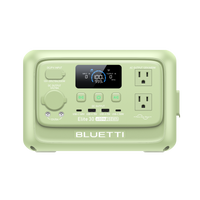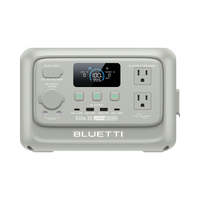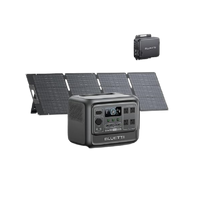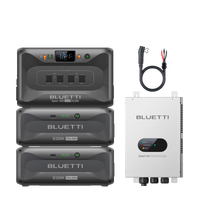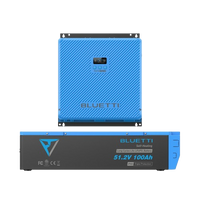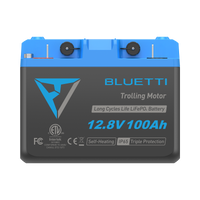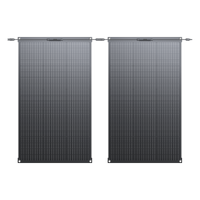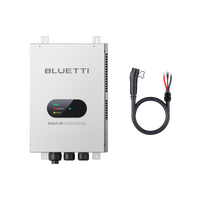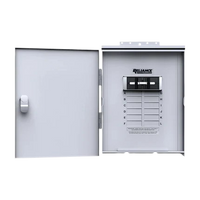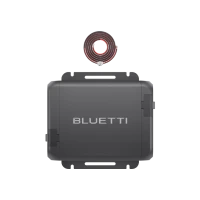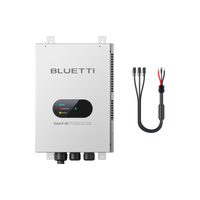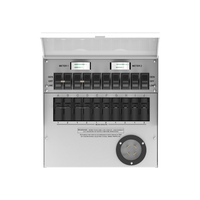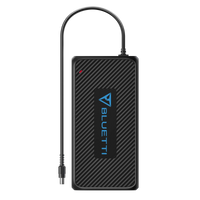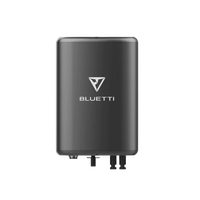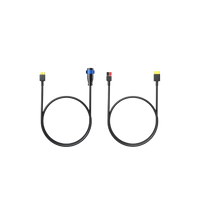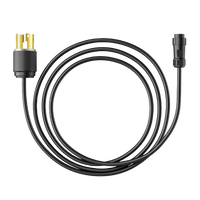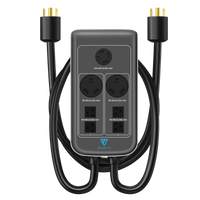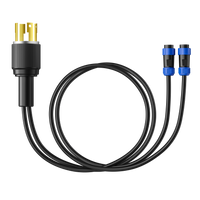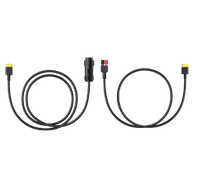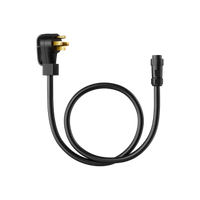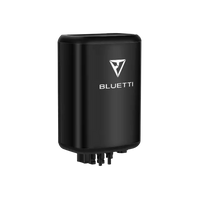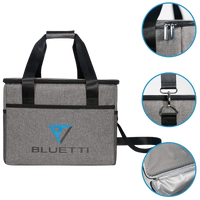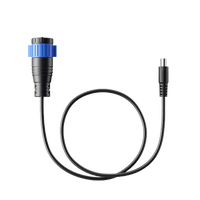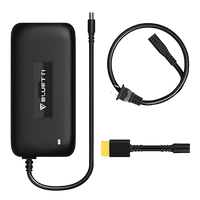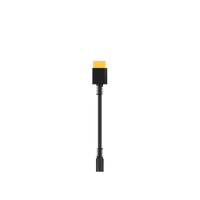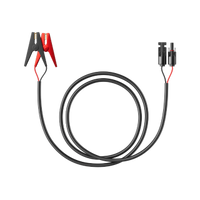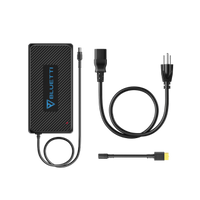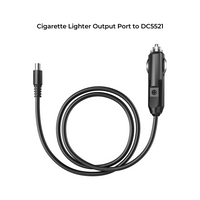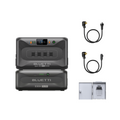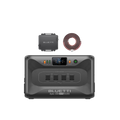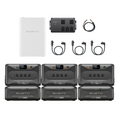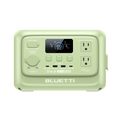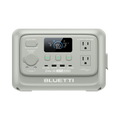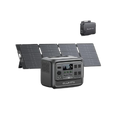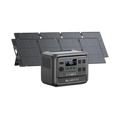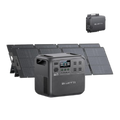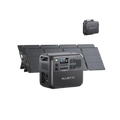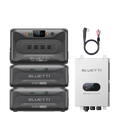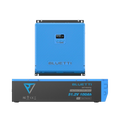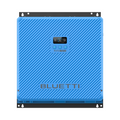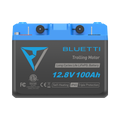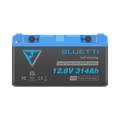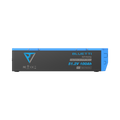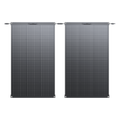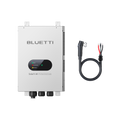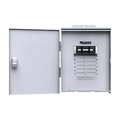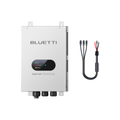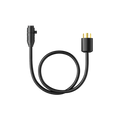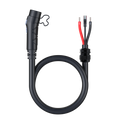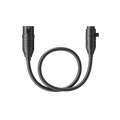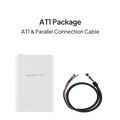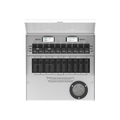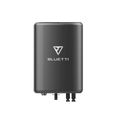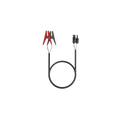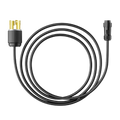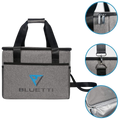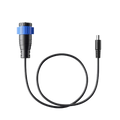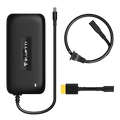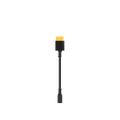Ces deux technologies sont essentielles à l'exploitation de l'énergie solaire. Elles contribuent toutes deux de manière significative à la captation et à l'utilisation de l'électricité solaire, bien que leurs rôles soient différents.
Malgré leur différence évidente, on confond souvent les deux appareils. En pratique, les onduleurs transforment le courant continu produit par les générateurs solaires en courant alternatif pour une utilisation domestique. Si les deux ont leur utilité dans les installations résidentielles, le choix le plus approprié dépend de plusieurs facteurs.
Cet article explique le fonctionnement des deux appareils ainsi que leurs avantages respectifs.
Qu'est-ce qu'un générateur solaire ?
Il s'agit d'une machine qui utilise l'énergie solaire pour la transformer en électricité. Cette électricité convertie est une source renouvelable, contrairement au réseau électrique ou aux énergies fossiles. Ce processus est rendu possible grâce à des capteurs photovoltaïques qui captent la lumière du soleil et la convertissent en courant continu.
Cette énergie est ensuite convertie en courant alternatif, la forme d'électricité la plus répandue dans les appareils électroménagers. L'énergie produite par le générateur solaire peut ainsi être utilisée dans diverses applications.
Par ailleurs, les générateurs sont également équipés de batteries. Ces dernières permettent au système de stocker l'énergie produite, assurant ainsi son fonctionnement même en l'absence d'ensoleillement. De ce fait, leur rendement s'en trouve accru, les rendant plus fiables et plus adaptés à diverses applications énergétiques.
Comment fonctionne un générateur solaire ?

Son fonctionnement repose sur un processus de conversion de l'énergie solaire en électricité. Cette transformation débute avec des panneaux solaires qui captent la lumière du soleil et produisent du courant continu. Ce courant continu représente l'état initial de l'énergie produite directement à partir de l'énergie solaire.
Cette alimentation CC est contrôlée par un régulateur de charge qui gère le processus de charge de la batterie, garantissant ainsi une distribution d'énergie efficace et sûre. L'énergie est ensuite stockée dans la batterie pour une utilisation ultérieure.
Composants d'un générateur solaire
Le générateur solaire est composé de plusieurs unités clés, qui remplissent des tâches indépendantes dans la production et l'utilisation de l'énergie solaire.
- Panneaux solaires : C’est le début du processus qui capte les rayons du soleil et produit de l’électricité.
- Contrôleur de charge : Il surveille le flux de courant entre le capteur solaire et la batterie, éliminant ainsi les situations de surcharge ou de sous-charge d'une cellule.
- Ports USB : Elles sont destinées aux appareils qui peuvent être chargés par câble USB, comme par exemple les téléphones portables, les tablettes, etc.
- Lumières LED : Certains générateurs solaires sont équipés de ces lampes (pour l'éclairage).
- Batterie: Ce sous-système est chargé de stocker l'énergie électrique produite par les capteurs de lumière naturelle. Il conserve cette énergie pour une utilisation ultérieure.
- Onduleur: L'interrupteur sert de convertisseur, transformant l'énergie stockée dans la batterie de courant continu en courant alternatif. C'est précisément le principe de fonctionnement de la plupart des appareils électroniques.
- Prises CC/CA : L'énergie produite peut être acheminée par ces voies et utilisée, le cas échéant, pour alimenter des appareils nécessitant du courant alternatif ou du courant continu.
Qu'est-ce qu'un onduleur ?

Un onduleur est un appareil qui transforme un courant continu (CC), où le flux de charges électriques est constant, en courant alternatif (CA), où le flux de charges s'inverse périodiquement. Dans les systèmes d'énergie solaire, les onduleurs jouent un rôle fondamental. Ils transforment le courant continu (CC) produit par les panneaux solaires ou les batteries en courant alternatif (CA). C'est ce courant alternatif qui alimente la plupart des appareils électroménagers et électroniques.
Les onduleurs solaires sont un élément essentiel de nombreuses solutions d'énergie solaire. Ils permettent le fonctionnement des appareils et, si nécessaire, injectent le surplus d'électricité dans le réseau pour la réinjecter dans les fournisseurs d'énergie. Ceci garantit une production d'énergie optimale et favorise une consommation d'énergie plus respectueuse de l'environnement.
Comment fonctionne un onduleur ?
Les onduleurs convertissent le courant continu (CC) en courant alternatif (CA) grâce à divers composants électroniques. Ils reçoivent le courant continu et la modulation de largeur d'impulsion (MLI) permet de modifier la tension et la fréquence de ce courant. On obtient ainsi du courant alternatif, compatible avec la quasi-totalité des appareils électroménagers et électroniques. Ce processus de conversion est fondamental pour tous les systèmes d'énergie solaire.
Types d'onduleurs
Les onduleurs se répartissent en trois types, à savoir :
- Onduleurs intégrés au réseau : Elles sont raccordées au réseau électrique et conçues pour injecter dans ce réseau tout excédent d'électricité produit par les panneaux solaires. Elles ne comportent pas de système d'éclairage à batterie.
- Onduleurs hors réseau : Ces systèmes sont utilisés dans les installations hors réseau où ils fonctionnent grâce à des batteries en cas de panne du réseau électrique. Ils captent le courant continu produit par des panneaux solaires ou d'autres sources et le convertissent en courant alternatif, capable d'alimenter les appareils électroniques et électroménagers.
- Onduleurs hybrides : Ces appareils peuvent fonctionner aussi bien en mode autonome qu'en mode connecté au réseau. Ils sont équipés d'un système de batteries de secours et peuvent basculer entre l'alimentation par le réseau et par batterie.
Avantages et inconvénients des générateurs solaires
Les générateurs solaires, comme toute technologie, présentent leurs propres avantages et inconvénients.
Avantages
- Ils utilisent l'énergie lumineuse du jour, une source d'électricité propre et écologique.
- Cette fonctionnalité de mobilité facilite leur utilisation dans des endroits dépourvus de réseau électrique.
- Ils nécessitent moins d'entretien et génèrent peu ou pas de bruit.
- Elles constituent des sources d'énergie alternatives très fiables en cas de coupure du réseau électrique.
Inconvénients
- Ils peuvent eux-mêmes être coûteux, surtout lorsqu'il s'agit de grands systèmes.
- Ils pourraient ne pas fournir suffisamment de puissance pour alimenter des appareils plus volumineux.
- Leur efficacité dépend de la présence du soleil ; elle diminue en cas de nuages dans le ciel ou de ciel couvert.
Avantages et inconvénients des onduleurs
Outre leur capacité à convertir le courant continu en courant alternatif, les onduleurs présentent également leurs propres avantages et inconvénients.
Avantages
- Ils permettent l'utilisation d'appareils alimentés en courant alternatif, qui sont plus courants que ceux alimentés en courant continu.
- Ils offrent une grande flexibilité en matière de gestion de l'énergie, car ces systèmes fonctionnent aussi bien en mode connecté au réseau qu'en mode autonome.
Cons
- Elles peuvent s'avérer coûteuses, surtout si un système d'alimentation de secours (système de batteries) est nécessaire.
- Elles peuvent ne pas être aussi efficaces que le courant continu, car une partie de l'énergie est gaspillée lors de la conversion.
- Ils nécessitent un entretien constant pour fonctionner de manière optimale et durer plus longtemps.
Comparaison détaillée
Les générateurs et onduleurs solaires diffèrent considérablement par leurs caractéristiques.
- Fonctionnalités : Les générateurs solaires sont des appareils tout-en-un qui produisent, stockent et distribuent l'électricité. Les onduleurs, quant à eux, convertissent le courant continu (CC) en courant alternatif (CA), rendant ainsi les appareils fonctionnant en CA utilisables.
- Coût: Les générateurs solaires représentent une option assez coûteuse en raison du prix des panneaux solaires et du système de batteries nécessaires à leur fonctionnement.
- Portabilité: Les générateurs solaires sont conçus pour offrir un maximum de confort d'utilisation et une grande facilité de transport. Les onduleurs sont généralement installés dans des emplacements spécifiques et leur installation peut nécessiter l'intervention d'un professionnel.
- Puissance de sortie : Les onduleurs, en particulier, sont adaptés aux appareils de grande taille car leur capacité de puissance de sortie est plus élevée.
Générateurs solaires recommandés
Kit générateur solaire BLUETTI EB55 + PV120
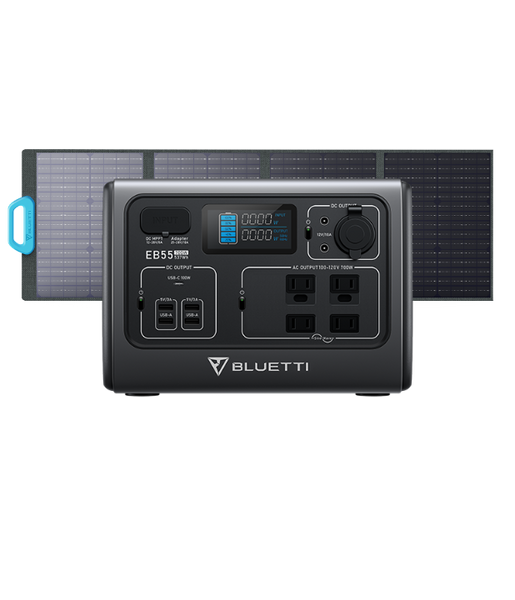
Ce groupe électrogène écologique est équipé d'un onduleur à onde sinusoïdale pure de 700 W avec une puissance de crête maximale de 1 400 W. Il possède une capacité de 537 Wh et utilise une batterie LiFePO4 d'une durée de vie d'environ 2 500 cycles. De plus, il dispose de 12 prises pour répondre à de nombreux besoins électriques et de six options de recharge différentes. Enfin, le panneau solaire PV120 fourni est pliable, transportable et compatible avec la plupart des générateurs solaires.
Kit générateur solaire BLUETTI EB70S + PV200

Doté d'une batterie d'une capacité impressionnante de 716 Wh et d'une puissance de sortie maximale de 800 W, ce système est un choix exceptionnel. Il repose sur une batterie LiFePO4 robuste et offre plusieurs options de puissance. De plus, le kit se recharge complètement en 3 à 4 heures grâce à des panneaux solaires ou une prise secteur. Son panneau pliable PV200 inclus est compatible avec la plupart des accessoires pour générateurs solaires. Enfin, portable et léger, il convient à une large gamme d'utilisations en extérieur.
Réflexions finales
En résumé, le choix entre un onduleur solaire et un générateur solaire n'est pas une décision universelle. Il dépend de votre situation personnelle : besoins énergétiques, budget et facteurs environnementaux. Les onduleurs solaires, plus efficaces et économiques, convertissent généralement le courant continu (CC) produit par les panneaux solaires en courant alternatif (CA) pour un usage domestique et sont donc généralement plus adaptés aux installations fixes et durables. En revanche, les générateurs solaires, capables de stocker l'énergie solaire pendant les journées ensoleillées et de la restituer en cas d'absence de soleil, sont portables et peuvent fournir une alimentation de secours en cas d'urgence. Chacun présente ses propres avantages et représente une solution essentielle pour un avenir énergétique durable. Comme toujours, il est crucial de bien se renseigner et de prendre en compte tous les aspects avant de prendre une décision. N'oubliez pas que la meilleure solution est celle qui correspond parfaitement à vos besoins et qui contribue à un avenir plus vert pour notre planète.














